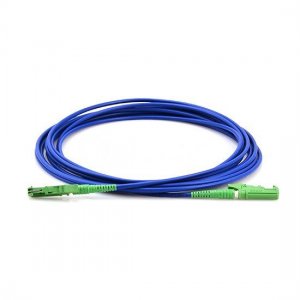
# Fiber Patch Cable: Essential Connectivity Solution for High-Speed Networks
## Introduction to Fiber Patch Cables
Fiber patch cables, also known as fiber jumper cables or fiber optic patch cords, are essential components in modern high-speed network infrastructures. These cables serve as the critical link between network devices, enabling seamless data transmission across various networking environments.
## Key Features of Fiber Patch Cables
Fiber patch cables offer several distinct advantages that make them indispensable in today’s digital landscape:
- High bandwidth capacity for fast data transfer
- Low signal attenuation over long distances
- Immunity to electromagnetic interference
- Lightweight and flexible design
- Secure data transmission with minimal risk of interception
## Types of Fiber Patch Cables
Single-Mode vs. Multimode
The two primary types of fiber patch cables are single-mode and multimode. Single-mode cables are designed for long-distance communication with a smaller core diameter, while multimode cables are better suited for shorter distances with higher bandwidth capacity.
Common Connector Types
Fiber patch cables come with various connector types to accommodate different networking needs:
- LC (Lucent Connector) – compact design for high-density applications
- SC (Subscriber Connector) – push-pull mechanism for easy installation
- ST (Straight Tip) – bayonet-style connection for secure attachment
- MTP/MPO – multi-fiber connectors for high-capacity applications
## Applications of Fiber Patch Cables
Data Centers
In data center environments, fiber patch cables provide the backbone for server-to-switch connections, storage area networks, and high-speed interconnects between equipment.
Telecommunications
Telecom providers rely on fiber patch cables for last-mile connections, central office installations, and backbone network infrastructure.
Enterprise Networks
Businesses utilize fiber patch cables to connect network switches, routers, and other critical networking equipment throughout their facilities.
## Choosing the Right Fiber Patch Cable
When selecting fiber patch cables for your network, consider these important factors:
- Required transmission distance
- Bandwidth needs
- Environment conditions (indoor/outdoor)
- Connector compatibility
- Cable length and bend radius requirements
## Maintenance and Handling Tips
Proper Installation
Always follow manufacturer guidelines for installation to prevent damage to the delicate fiber strands. Avoid excessive bending or pulling during installation.
Regular Inspection
Periodically inspect connectors for dust or damage, and clean them using appropriate fiber optic cleaning tools when necessary.
Storage Considerations
Store unused fiber patch cables properly coiled in a clean, dry environment to prevent damage and maintain performance.
## Future of Fiber Patch Cables
Keyword: Fiber Patch Cable
As network speeds continue to increase with technologies like 400G and beyond, fiber patch cables will evolve to support these higher bandwidth requirements. New connector designs and advanced fiber materials will further enhance performance and reliability in next-generation networks.
Fiber patch cables remain a fundamental component in building robust, high-performance network infrastructures across various industries. Their ability to provide fast, reliable, and secure data transmission ensures they will continue to play a vital role in our increasingly connected world.
